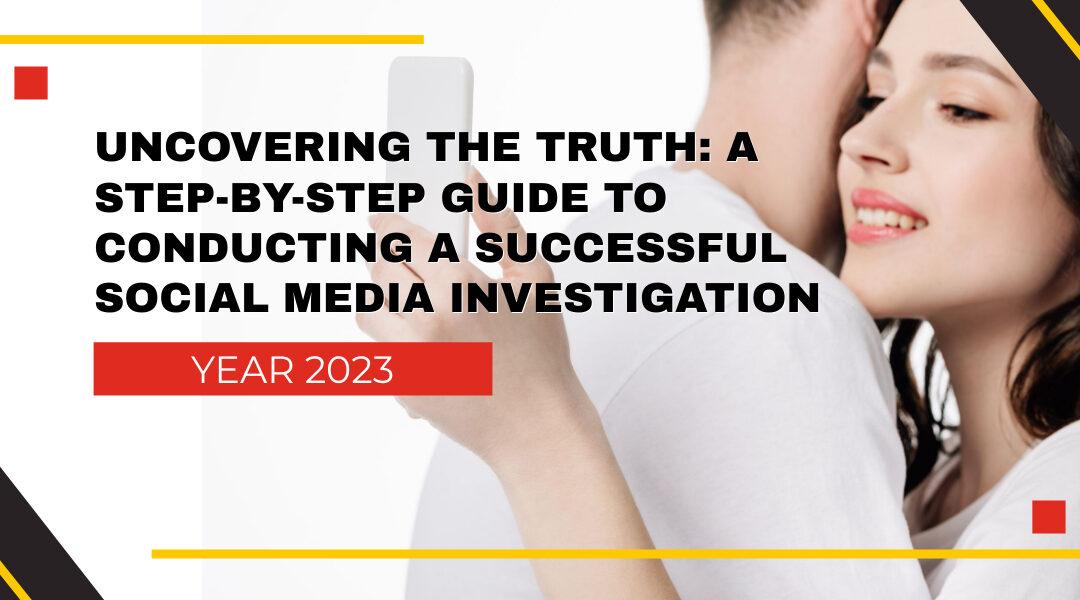Social media has become an integral part of our daily lives, providing us with a platform to connect with friends and family, share our thoughts and experiences, and keep up with current events. With billions of users worldwide, social media has become an immense source of information and data that private investigators can use to uncover important evidence in a wide range of cases, from criminal investigations to civil litigations.
But how do private investigators actually conduct a social media investigation? Here’s a step-by-step guide on how to approach this complex process.
Step 1: Define the scope of Social Media Investigation
The first step in conducting a social media investigation is to determine the scope of the investigation. This involves identifying the goals of the investigation and the specific information you are looking for. For example, you may be looking for evidence of criminal activity, information about a person’s location, or insights into a company’s marketing strategy.
Step 2: Identify relevant social media platforms
Once you have defined the scope of the investigation, the next step is to identify the social media platforms that are most relevant to your case. This will typically include popular platforms like Facebook, Twitter, Instagram, and LinkedIn, but could also include less well-known platforms that are specific to a particular industry or geographic region.
Step 3: Collect and preserve the data
Once you have identified the relevant social media platforms, the next step is to collect and preserve the data. This involves making copies of the relevant data and storing it in a secure manner to ensure that the information can be used as evidence in court if necessary.
One way to collect data is by using a social media monitoring tool that can automatically collect and store data from the selected social media platforms. Another way is to manually collect data by taking screenshots of relevant posts, images, and comments. It’s important to note that social media platforms have terms of service that prohibit the unauthorized scraping of data, so investigators should be careful to comply with these rules when collecting data.
Step 4: Analyze the data
Once you have collected the data, the next step is to analyze it. This involves reviewing the data to identify any relevant information and patterns. For example, you may be looking for specific keywords, hashtags, or geographical locations that can help you to build a more complete picture of the case.
One way to analyze the data is by using a social media analysis tool that can help you to identify patterns and trends in the data. Another way is to manually review the data, looking for specific information that may be relevant to your investigation.
Step 5: Present the findings
The final step in conducting a social media investigation is to present the findings. This involves summarizing the information you have collected and analyzed and presenting it in a clear and concise manner that can be easily understood by others.
The findings of a social media investigation can be used in a variety of ways, including as evidence in criminal and civil court cases, to support business decisions, or to inform public opinion.
In conclusion, social media investigations can be a complex and time-consuming process, but with the right tools and techniques, investigators can uncover valuable information that can help to support a wide range of cases. Whether you are an investigator, a lawyer, or a business professional, it is important to understand the process of conducting a social media investigation and to be familiar with the relevant tools and techniques that can help you to achieve your goals.
